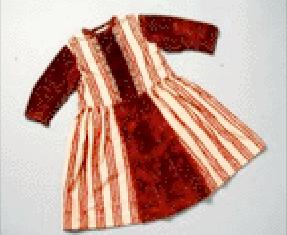
Figure 1.--The dresses worn by boys were not as elaborate as those worn by their sisters, but like this 1888 dress, they were more colorful than the suits worn by older boys.


Figure 1.--The dresses worn by boys were not as elaborate as those worn by their sisters, but like this 1888 dress, they were more colorful than the suits worn by older boys. |
Some actual dresses from the late 19th Century have survived and exist now in individual collections or as museum pieces. They of course provide a great deal of information on both color, style, and material. We also notice a wide variation in quality. Some were clearly made at home. Others appear to be more finely finished, perhaps in the early 19th century purchhased from a seamstress or in the late 19th century more likely ready made. We also notice a wide range of colors being used. White was popular for younger children, but a variety of colored dresses were also worn. It is probably no accident that here we see brown and blue dresses. We are not yet sure, however, if colors like brown and blue were more common for boys. We believe that it is helpful to post color photographs of these actual period dresses so that readers can better interpret the old black and white photographs of boys wearing such dresses.
The brown dress pictured here could be worn by eith a boy or girl. It is basically a plain dress, with no fancy lace or ruffles. There is, however, some variation in color. While the dress is various shades of brown, it is still considerably more colorful than
the suits worn by boys. Like virtually all 19th Century dresses, it has long sleeves.

Figure 2.--This dress was probably made before the 1880s. I'm not sure if it was worn by a boy or girl. I think the side with draw strings was the front. |
More detail is available on the blue dress pictured here. This dress appears to be a home made dress for a small child. I would guess that it was probably made before the 1880s. One side has buttons and the other draw strings. I'm
not sure, however, which was the front. Probably the sides with draw strings was the front
as the sleeves stiches are less visibler. A HBC contributor, however, believes that based
on the contured section of fabric on the button side, postulates that it's the front and the laces go in back. Other than the buttons and drawstrings, there is no other difference
between the two sides. The plainess of the dress suggests that it may have been made for a boy, although the draw strings may suggest a girl's dress. The color is a bright blue with blue and brown trim at the hem. The hem trim was a common feature and had the added advantage that the hem could be easily lengthened as the child grew taller.
Note that the sleeves were short. Long sleeves were much more common in the 19th
Century. Short sleeve dresses did not become common until the 20th Century and were by
then worn by girls only. Short sleeves may have been more commion in home-sewn
dresses.

Figure 3.--This dress was probably made before the 1880s. The side with buttons was probably the back. |
This dress probably sewn at home is a good indicator that the custom of outfitting small boys in dresses was a widely followed custom crossing regional and class barriers. This dress was probably worn by a child from a family of modest means, but probably not a
poor family. A more affluent family would not have nmade the dress at home and it
probably would not have been as plain a dress.

Figure 4.--The Mint Museum of Art in 1999 sponsored an exhibit on Children's Fashions from the Nineteenth Century. On display was this child's slip which weould have been worn under a dress. |
The Mint Museum of Art in 1999 sponsored an exhibit on Children's Fashions from the Nineteenth Century. On display was a young boy's dress with a rosette "bustle" purchased in 1879 in Chicago for 4-year old James Cromwell. The Museum reports, "Such garments were worn over flounced petticoats with lace-trimmed pantalets or knee-length trousers beneath." We at first thougt that the garment seen here in the same dispaly was a white dress. We note know that it was a child's slip worn under a dress. It would have been suitable for both girls and younger boys. We see no distictively boyish stylistic features.
Navigate the Historic Boys' Clothing Web chronological pages:
[Return to the Main late 19th century dress page]
[The 16th century]
[The 17th century]
[The 18th century]
[Mid-18th century]
[Late-18th century]
[The 1800s]
[The 1810s]
[The 1820s]
[The 1830s]
[The 1840s]
[The 1850s]
[The 1860s]
[The 1870s]
[The 1880s]
Navigate the Historic Boys' Clothing Web dress pages:
[Return to the Main dress page]
[Pinafores]
[Sausage curls]
[Smocks]
[Bodice kilts]
[Kilts]
[Fauntleroy dresses]
[Sailor dresses]
[Fancy dresses]
[Dresses: 17th century]
[Dresses: 18th century]
[Dresses: Early-Mid-19th century]
[Dresses: Late-19th century]
[Dresses: Early 20th century]
[Difficult images]
[Movie dresses]
Navigate the Boys' Historical Clothing Web Site:
[Introduction]
[Activities]
[Biographies]
[Chronology]
[Clothing styles]
[Countries]
[Bibliographies]
[Contributions]
[FAQs]
[Glossaries]
[Satellite sites]
[Tools]
[Boys' Clothing Home]
